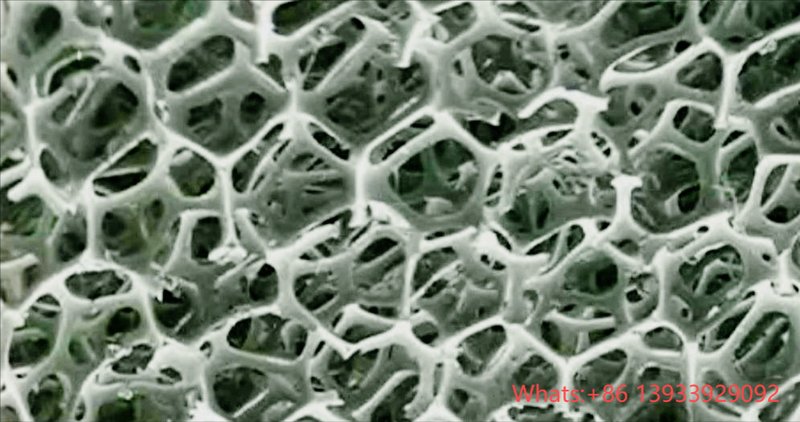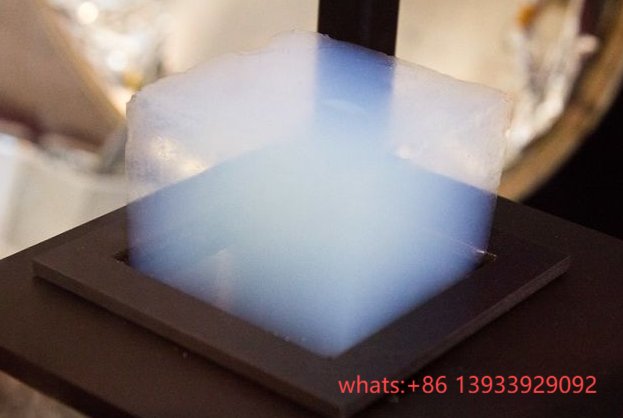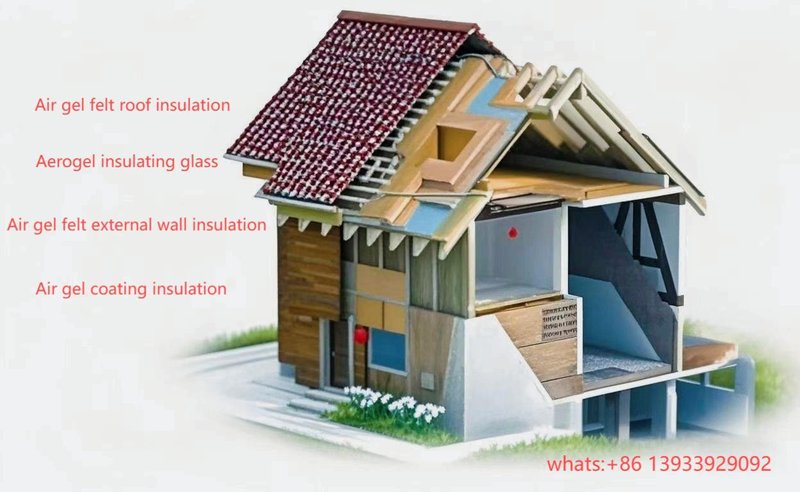Aerogel's Epic Turnaround: From Construction Outcast to Industrial Gold Standard in the Carbon-Neutral Boom
2025-03-08
Aerogel
Once sidelined in construction for its brittleness and high costs, aerogel has reinvented itself as a powerhouse material in the trillion-dollar carbon-neutral economy. Boasting densities as low as 3 kg/m³, thermal conductivity down to 0.013 W/(m·K), and flame resistance up to 650°C, it has shattered production barriers through innovative drying techniques and bio-sourced feedstocks. Now fueling EV battery fire safety, oil pipeline efficiency, and aerospace resilience, aerogel's market is exploding—projected to grow from $1.68 billion in 2025 to $6.54 billion by 2034—with Chinese innovators like Guangdong Alison and Nano Tech leading cost breakthroughs and global adoption.
Aerogel's journey reads like a classic underdog story: dismissed as too fragile and expensive for mainstream construction in the early 2000s, it languished as an "abandoned son" of the building world. Fast-forward to 2025, and this nanoscale marvel—often dubbed "frozen smoke"—has clawed its way to "gold king" status in high-stakes industries. With the global push for carbon neutrality accelerating, aerogel's unique attributes are unlocking efficiencies that save billions in energy and emissions. As the International Energy Agency warns of escalating climate risks, aerogel emerges as a strategic linchpin, poised to capture 15% of the $120 billion industrial insulation market by 2030.
Aerogel's Superpowers: The Nanoscale Arsenal for a Low-Carbon World
What makes aerogel indispensable? Its three-dimensional nanoporous structure—pores averaging 20–50 nm—traps air in a silica or polymer skeleton, yielding properties that border on the miraculous:
Insulation Mastery: Thermal conductivity as low as 0.013 W/(m·K), outperforming still air by stifling convection via the Knudsen effect, where gas molecules collide more with walls than each other.
Featherweight Strength: Densities from 3–200 kg/m³, yet capable of supporting 4,000 times its weight—think a 2-gram block holding up a 2-ton car.
Flame and Corrosion Defiance: Withstands 650°C direct flames without melting or dripping, and its hydrophobic variants repel water with contact angles over 150°, preventing rust in harsh environments.
Green Credentials: Primarily silica-based, it's recyclable, non-toxic, and increasingly sourced from waste like rice husk ash, aligning with circular economy principles.
These traits position aerogel as a hero in the carbon-neutral era. A 2025 IDTechEx report forecasts the overall aerogel market surging at 12.2% CAGR to triple by 2035, driven by its role in slashing industrial energy loss—responsible for 37% of global CO₂ emissions.
Conquering the "Impossible Triangle": Industrialization Breakthroughs
Aerogel's early hurdles—sky-high costs ($1,000/kg in the 1990s), low yields, and fragility—formed an "impossible triangle" that confined it to labs. By 2025, relentless innovation has flipped the script:
Supercritical Drying 2.0: Enhanced solvent recovery hits 95%, slashing costs 28% and tripling throughput to 50,000 m³ per line annually. Companies like Aspen Aerogels report production cycles halved from 72 to 36 hours.
Ambient-Pressure Optimization: Surface modifications with silanes enable drying at room conditions, boosting fiber-reinforced composites' mechanical strength by 41% while cutting energy use 60%. Guangdong Alison's lines in China exemplify this, outputting flexible blankets at scale.
Bio-Sourced Feedstocks: Using rice husk ash or lignin reduces raw material costs 33%, with VTT Finland and Chinese firms like Nano Tech pioneering biodegradable variants that decompose harmlessly.
These advances have plummeted prices to $100–200/kg, making aerogel viable for mass markets. Fact.MR estimates aerogel battery insulation alone ballooning from $375 million in 2025 to $4.5 billion by 2035.
Billion-Dollar Battlegrounds: Aerogel's High-Impact Applications
Aerogel's resurgence shines in three explosive sectors, where its properties translate to tangible savings and safety gains.
New Energy Vehicles: The Ultimate Fire Shield
EV fires from thermal runaway plague the industry, with over 100 incidents reported in China alone in 2024. Aerogel blankets—thin as 0.5 mm—act as inter-cell barriers, delaying propagation by tripling escape time.
Tesla's Play: Model Y integrates Aspen's PyroThin, enhancing pack integrity under 1,000°C abuse.
CATL's Edge: Kirin batteries embed aerogel, pushing density beyond 255 Wh/kg while meeting UN 38.3 fire standards.
2025 Outlook: Per vehicle usage 0.8–1.2 m²; penetration >60%; China market >¥8 billion, per IDTechEx. Alkegen's AlkeGel, launched in 2025, simplifies handling with low-dust designs.
Industrial Pipelines: Rewriting Efficiency Rules
Oil and gas lose $10 billion yearly to heat escape in pipelines. Aerogel felt replaces bulky rock wool, reducing thickness from 50 mm to 15 mm while cutting loss 40%.
Tahe Refinery Case: DN500 steam lines saved 3,800 tons of coal annually, with maintenance costs down ¥72,000/km.
Subsea Dominance: Aspen's Spaceloft insulates 550 miles of deepwater pipes, withstanding 10 km pressures.
Market Surge: ¥15 billion by 2025 in China, as per Precedence Research, fueled by LNG boom.
Aerospace: Nano-Armor for the Stars
Extreme temperature swings (−120°C to 1,200°C) demand flawless insulation. China's space station uses aerogel composites for module protection; Boeing's 787 employs it for 30 dB noise reduction.
NASA's 2025 Innovations: Embedded aerogel antennas in aircraft skins cut weight and drag.
Premium Payoff: Margins >300%, with J-20 stealth coatings leveraging SiC/CNT hybrids for radar absorption.
The Cost Cascade: From Elite to Everyday
Four drivers are democratizing aerogel:
Raw Material Plunge: Silicone monomers fell from ¥50,000/t to ¥28,000/t amid supply chain localization.
Equipment Indigenization: Domestic supercritical systems slash capex 60%.
Recovery Efficiency: Solvent reuse hits 35% savings.
Scale Effects: Plants over 100,000 m³ capacity reduce costs 42%.
For a 200 mm concrete wall: 10 mm aerogel panel vs. 80 mm rock wool cuts overall costs 18% and boosts occupancy 2.3%.
China's Overtaking Maneuver: Patents and Prowess
With 120+ patents in hydrophobic (160°+ contact angle), photocatalytic self-cleaning, and foldable films, Chinese firms like Namate New Materials and Aega Advanced Materials dominate. Guangdong Alison's atmospheric lines export to 50 countries, setting standards for next-gen aerogels in quantum optoelectronics and self-healing variants.
In a world racing to net-zero, aerogel's counterattack isn't just material—it's monumental, promising warmer homes, safer rides, and a cooler planet.
LATEST NEWS
Why Does Metal Feel Cold and Wood Feel Warm at the Same Room Temperature? Unveiling the Magic of Thermal Conductivity!
2025-11-20
Innovative Aerogel Pipe Insulation Boosting Efficiency in Energy Industries
2025-11-17
Ordering and Specification Guidance for Aerogel Sheet and Pipe Insulation Products
2025-11-17
Luminescent Concrete Transforms Global Architecture with Light and Design Freedom
2025-11-13
Aerogel: The Ultralight Revolution – Transforming Industries with Unmatched Versatility
2025-11-11



